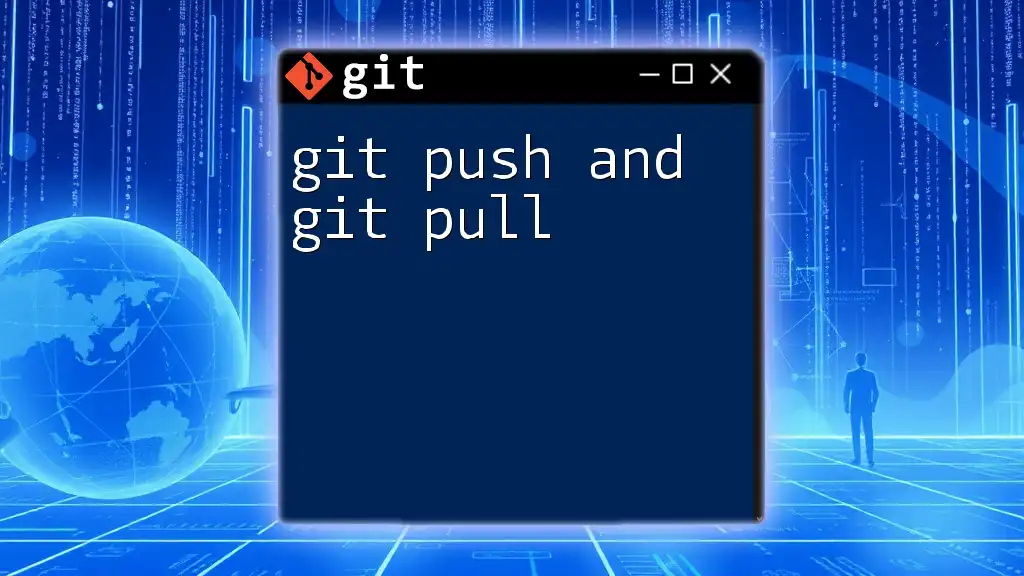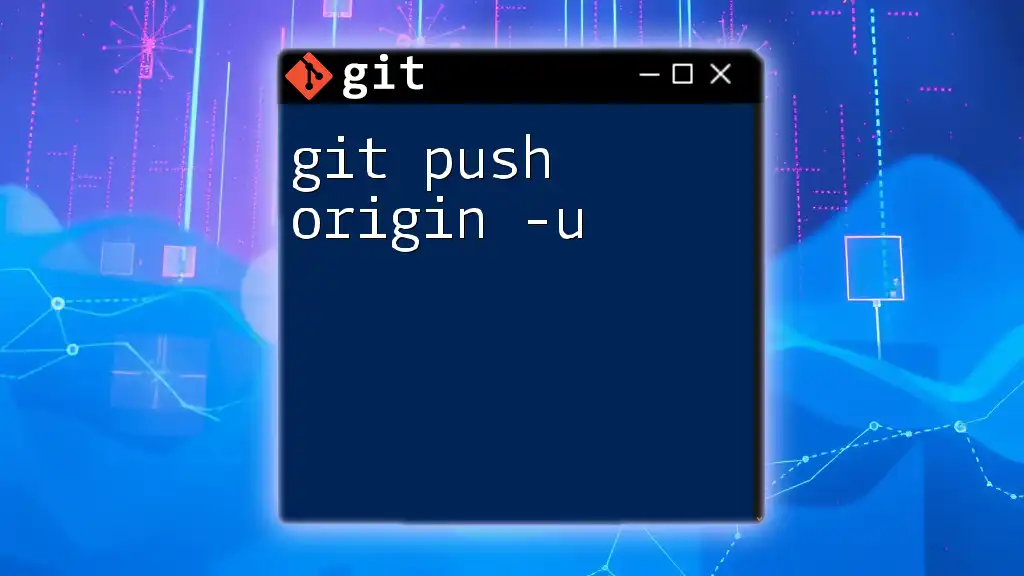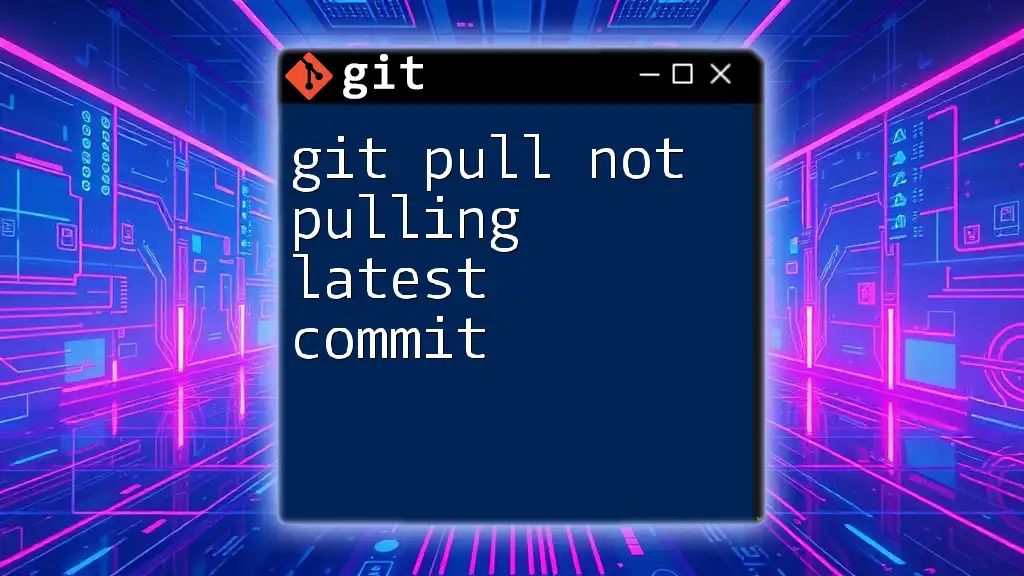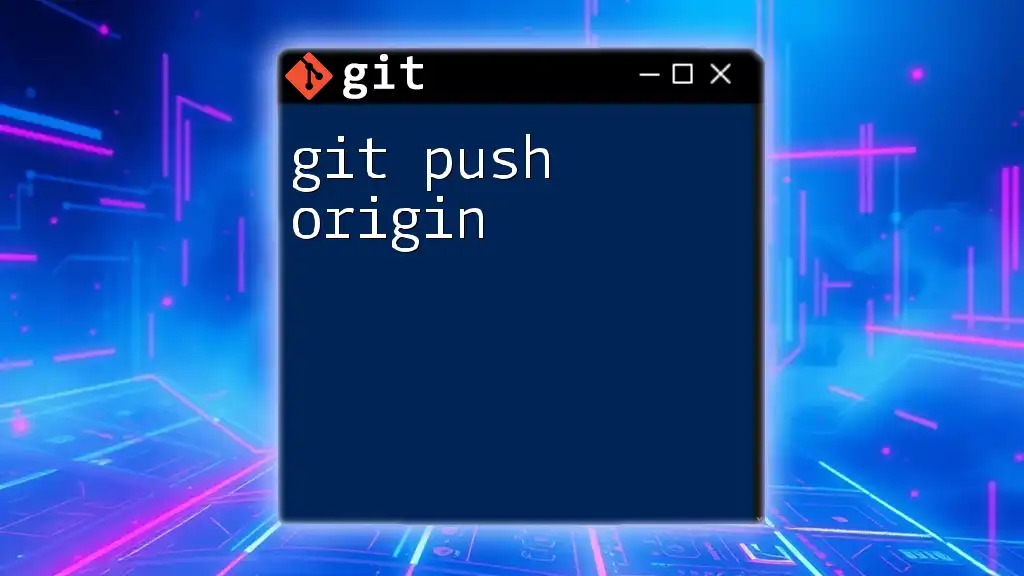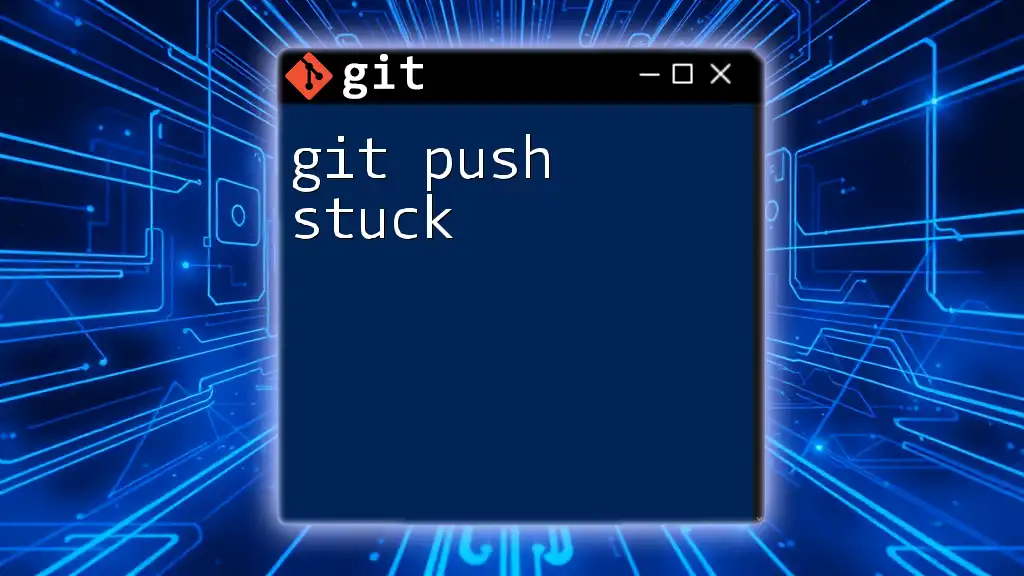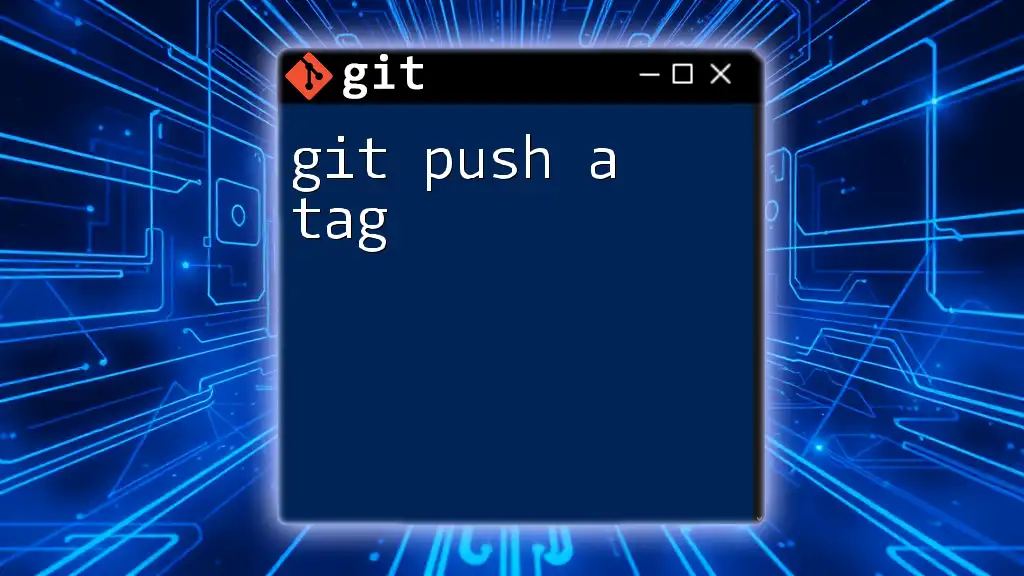Sure! Here’s a one-sentence explanation along with a code snippet for "git push" and "git pull":
"Git push uploads your local commits to a remote repository, while git pull fetches and merges changes from the remote repository into your local branch."
# Push local changes to the remote repository
git push origin main
# Pull changes from the remote repository to your local branch
git pull origin main
Understanding Git Basics
What is Git?
Git is a distributed version control system that allows developers to track code changes, collaborate with others, and maintain a history of their projects. It provides robust tools for branching and merging, making it easier to manage different features or versions of code simultaneously. Git's importance in modern development environments cannot be overstated; it enhances collaboration and reduces the risk of losing work by preserving a complete history of changes.
The Git Workflow
A typical Git workflow involves several key steps:
- Clone a repository to create a local copy.
- Add changes to stage them for commits.
- Commit the changes with a descriptive message.
- Push the changes to a remote repository.
- Pull to fetch and integrate changes from the remote repository.
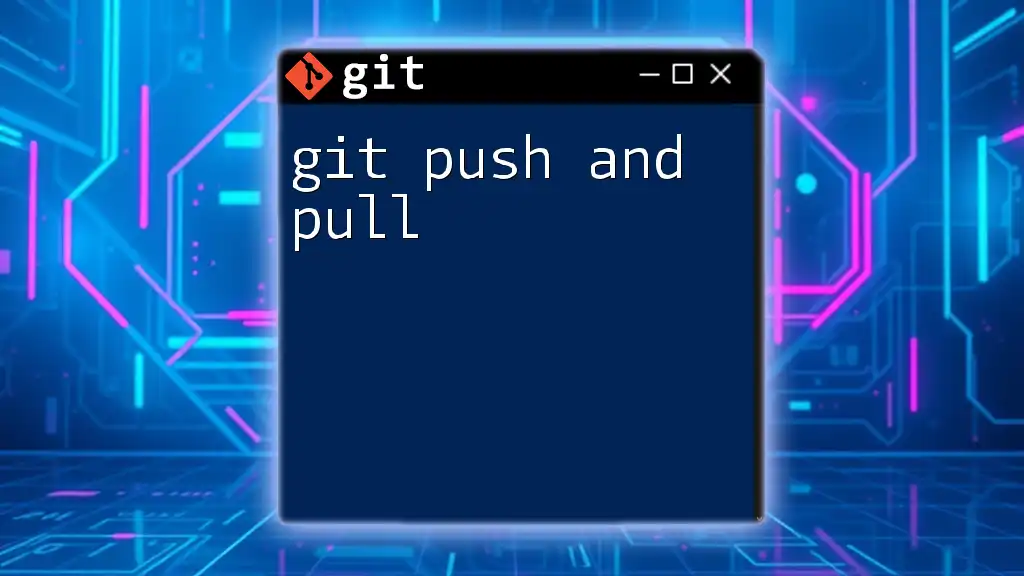
Introduction to Git Push and Git Pull
What is Git Push?
`git push` is a command that allows you to transfer your local commits to a remote repository. It is essential for sharing your changes with collaborators, ensuring that everyone is working with the latest version of the project. Without using `git push`, your local changes remain isolated in your own copy of the repository.
What is Git Pull?
On the other hand, `git pull` is a command used to fetch and merge changes from a remote repository into your local branch. It is essential for keeping your local work in sync with the project's remote source, thus preventing potential conflicts when collaborating with others.

The Syntax of Git Push and Git Pull
How to Use Git Push
The general syntax for `git push` is:
git push <remote> <branch>
In this command:
- `<remote>` specifies the name of the remote repository (commonly `origin`).
- `<branch>` indicates which branch you want to push your changes to (e.g., `main`, `develop`).
How to Use Git Pull
The general syntax for `git pull` is:
git pull <remote> <branch>
Similar to `git push`, this command involves:
- `<remote>`, which usually refers to the remote repository (e.g., `origin`).
- `<branch>`, which tells Git from which branch to pull updates (e.g., `main`).
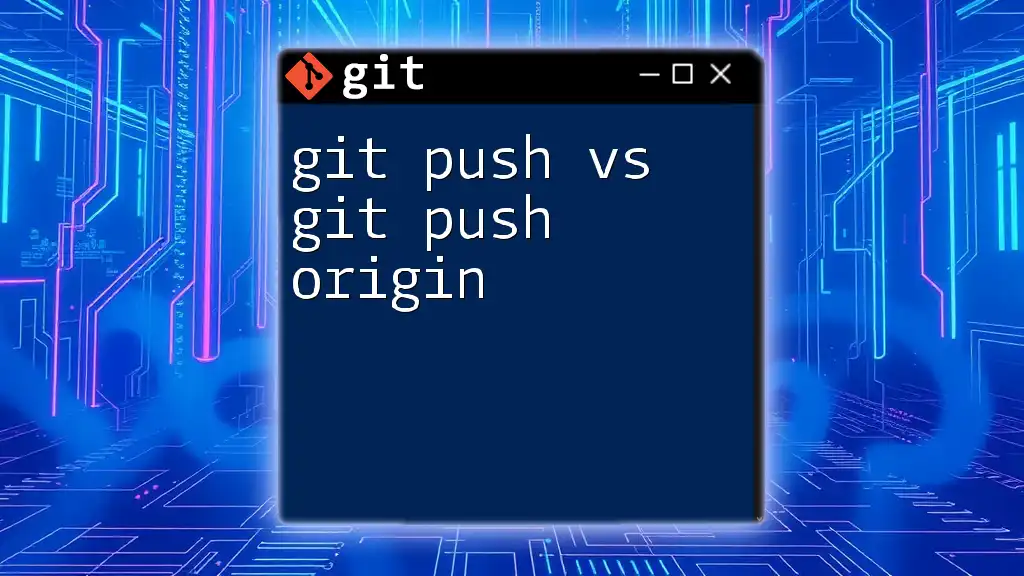
Workflow Scenarios: When to Use Each Command
Pushing Your Changes
Using `git push` involves a few straightforward steps. After you have made local changes, you should follow this workflow:
-
Stage your changes:
git add . -
Commit your changes:
git commit -m "Your commit message" -
Push to the remote repository:
git push origin main
In this process, staging files prepares them for the commit, and committing saves the staged changes along with a meaningful message to describe what you've done. Finally, pushing sends your commits to the `main` branch of the remote `origin` repository.
It's crucial to understand upstream tracking when pushing changes. If you're working with branches, you might need to set the upstream branch on your first push using:
git push -u origin my-feature-branch
Pulling Updates from a Remote Repository
When using `git pull`, you will typically want to do this before starting new work or before pushing your changes to ensure you're up to date. Here’s how to perform a pull:
- Pull the changes from the remote repository:
git pull origin main
While executing this command, Git fetches the latest changes from the `main` branch of the `origin` remote and merges them with your local copy. This step ensures that your work is based on the most current code, minimizing the risk of conflicts later.
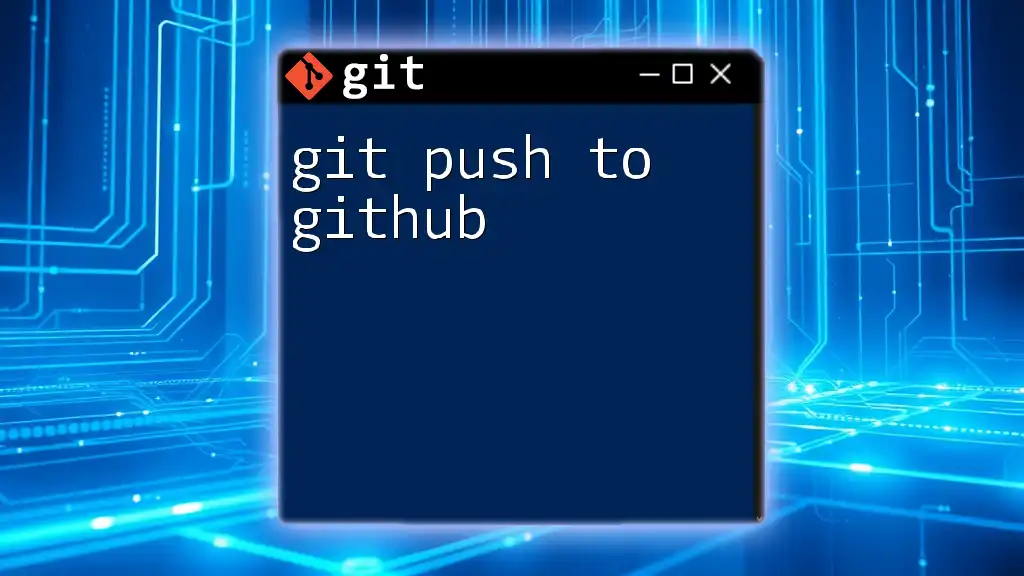
Understanding Merge Conflicts
What is a Merge Conflict?
Merge conflicts are situations that occur when Git is unable to automatically reconcile differences between two changes. This typically happens when:
- Two developers modify the same line of a file, or
- One developer modifies a file while another developer deletes it.
Resolving Merge Conflicts
If you encounter a merge conflict after executing `git pull`, you will need to resolve it manually. Follow these steps:
-
Open the conflicting file in your preferred text editor. You will see markers indicating the conflicting sections.
-
Resolve the conflicts by choosing which changes to keep.
-
Once resolved, stage the changes:
git add <filename> -
Finally, commit your changes:
git commit -m "Resolved merge conflict"
This process allows you to maintain control over the integration of changes within your project.
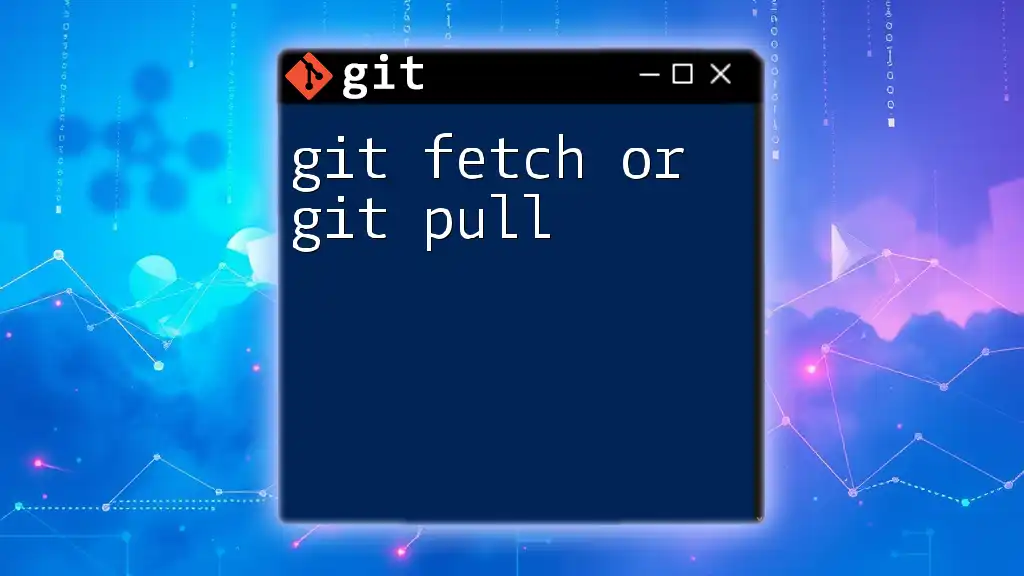
Best Practices for Using Git Push and Git Pull
When to Push
It's essential to push regularly, but avoid pushing broken code or incomplete features to avoid disrupting your team. A good rule of thumb is to push changes whenever you reach a logical stopping point, such as after completing a specific task or fixing a bug.
When to Pull
You should pull updates before starting new work or before making significant changes. This habit ensures that you base your work on the latest version of the codebase, reducing the chances of conflicts.
Using Push and Pull with Feature Branches
Working with feature branches is a recommended practice. These branches allow developers to work independently on specific features without affecting the `main` line of development. When ready to integrate, use `git push` to push the feature branch to the remote repository and create a pull request for review. Always ensure that you pull changes from the `main` branch into your feature branch regularly to keep it up to date.
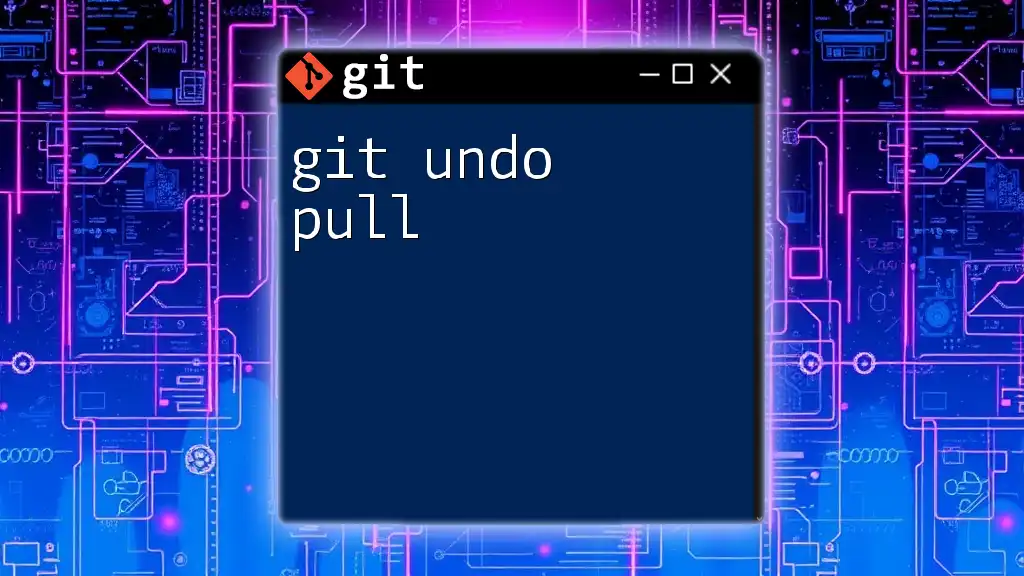
Troubleshooting Common Issues
Errors You Might Encounter with Git Push
One common error when pushing is “failed to push some refs.” This can occur if your local branch is behind the remote branch. To resolve this, you may need to pull the changes first and resolve any conflicts.
Errors You Might Encounter with Git Pull
Conflicts, like “Merge conflict in...”, occur frequently during pulls. Don’t panic; carefully follow the steps outlined previously to resolve the conflict. After resolving, commit your changes to complete the pull.

Conclusion
Recap of Key Concepts
In summary, understanding how to effectively use `git push` and `git pull` is vital for any developer working with Git. These commands allow you to share changes and stay in sync with team members.
Encouraging Best Practices
Developing a routine involving regular pushes and pulls will contribute to a smooth workflow. By adhering to these practices, you foster better collaboration and maintain project integrity.

Additional Resources
For further exploration of Git and its capabilities, refer to the [official Git documentation](https://git-scm.com/doc) and consider enrolling in recommended tutorials or courses to deepen your understanding of Git commands and workflows.

